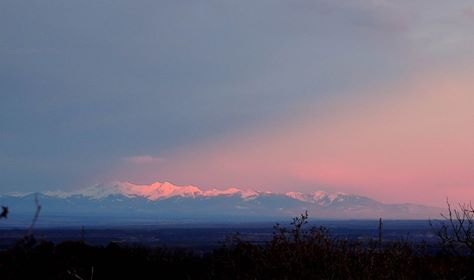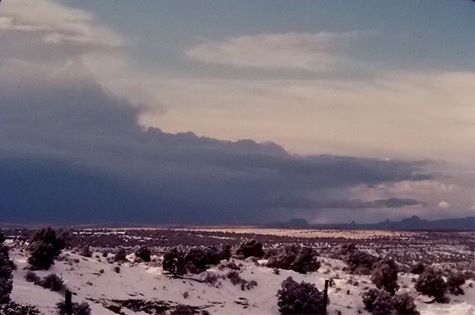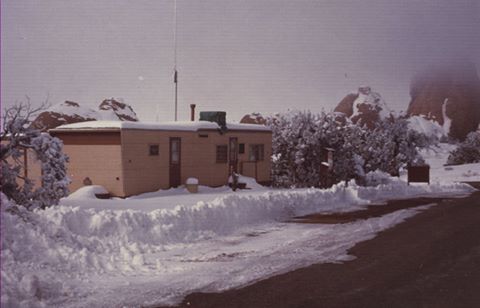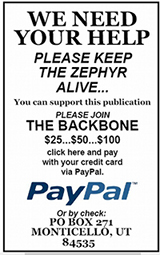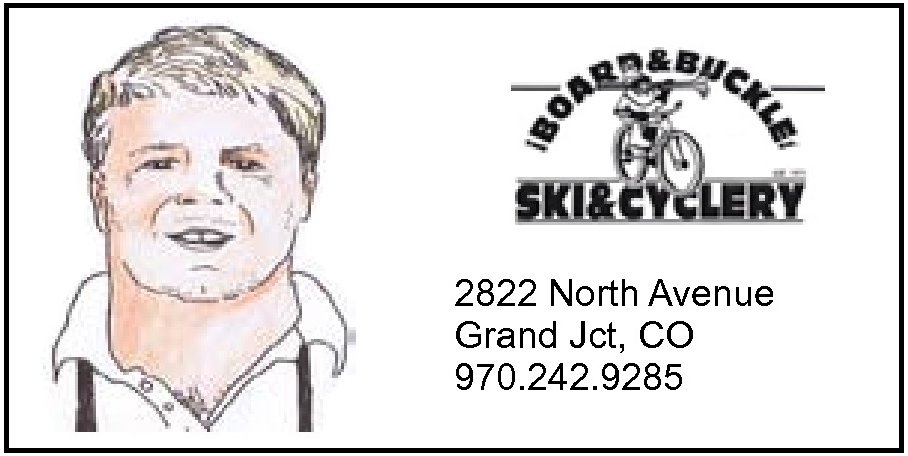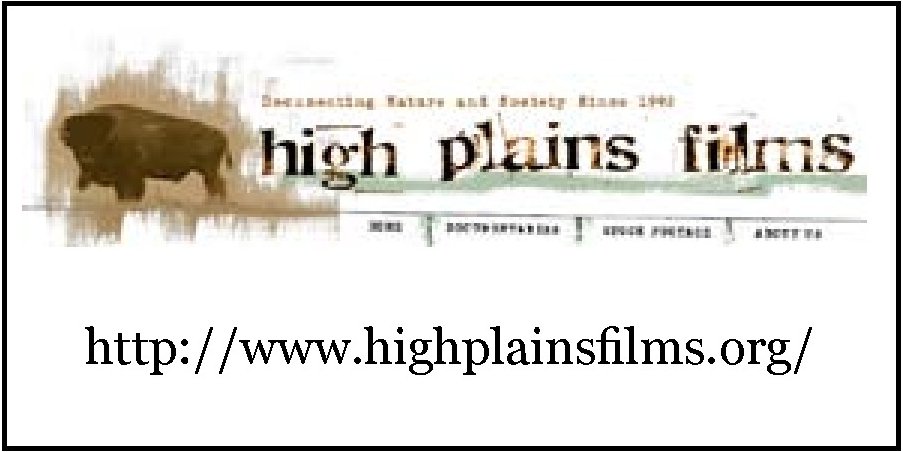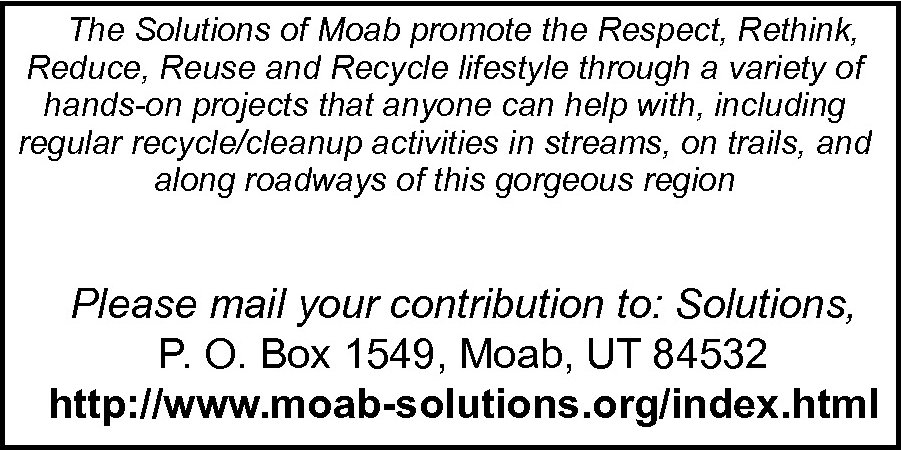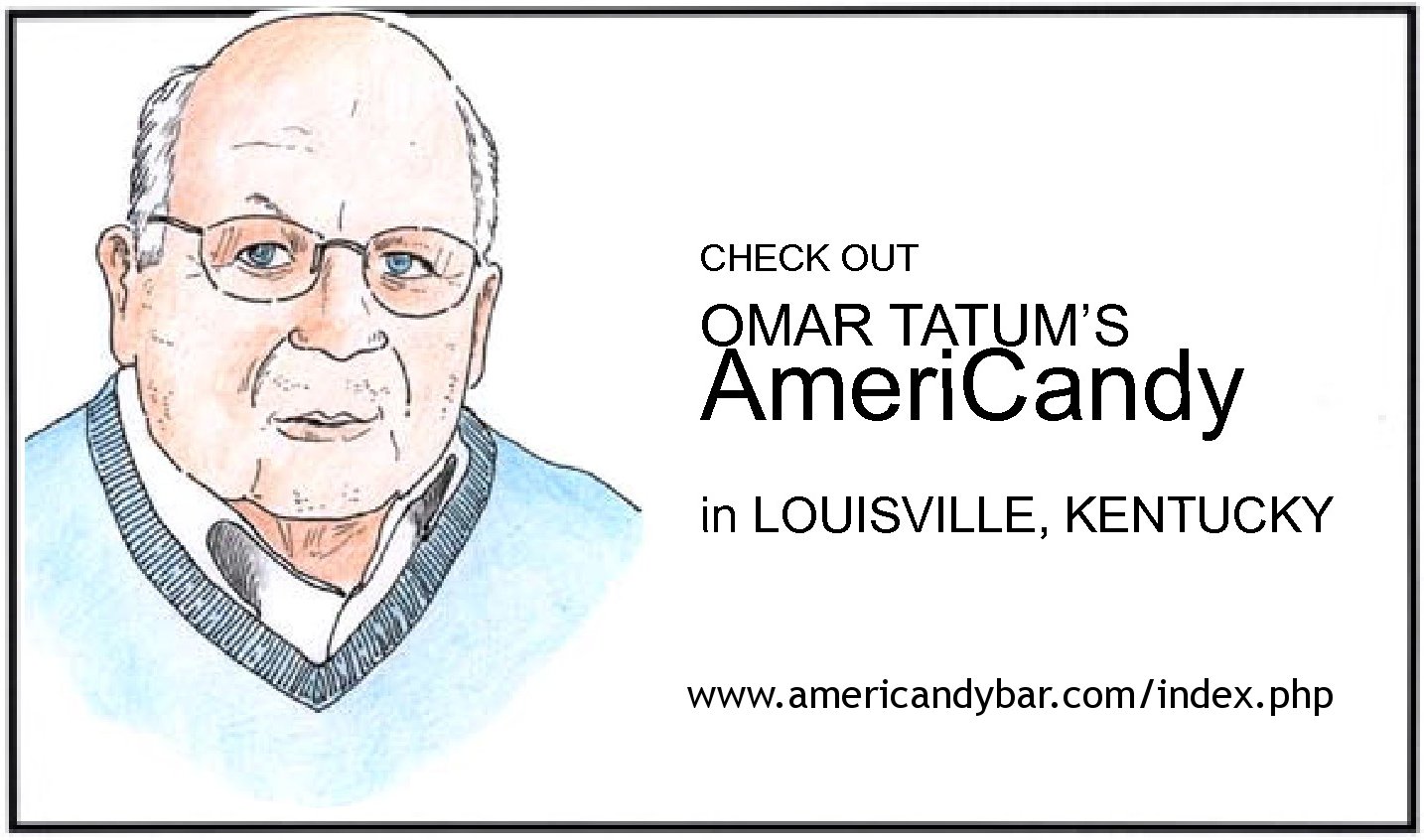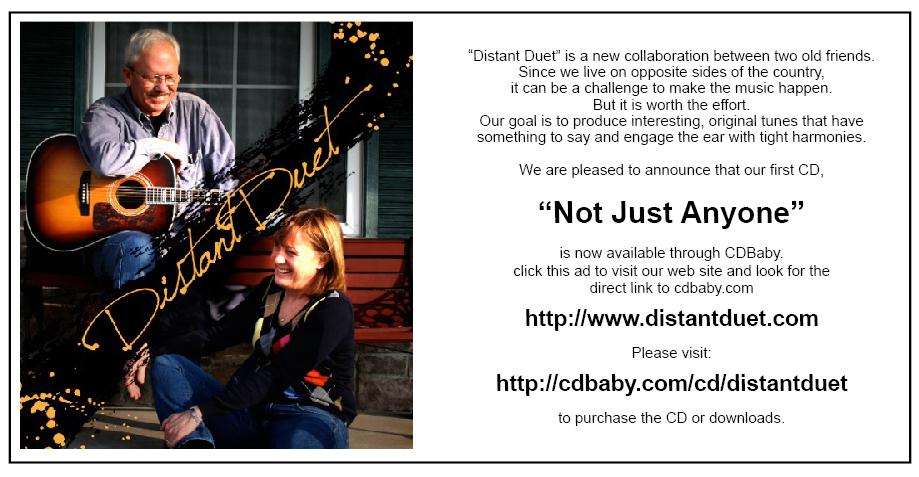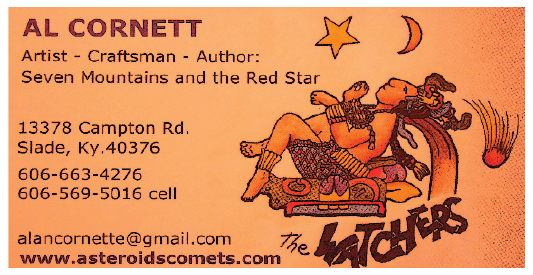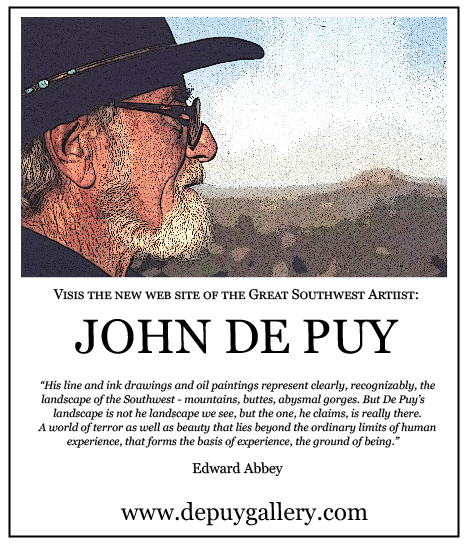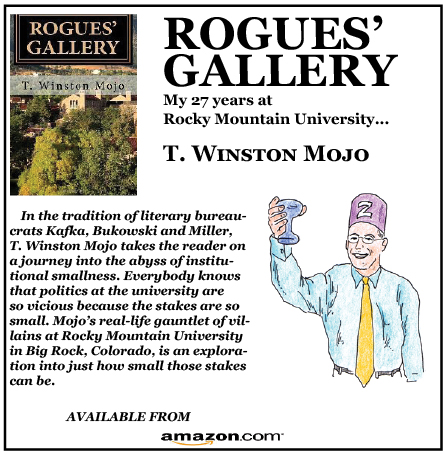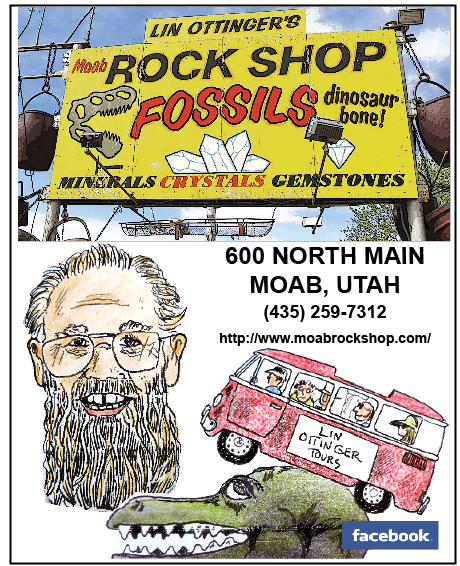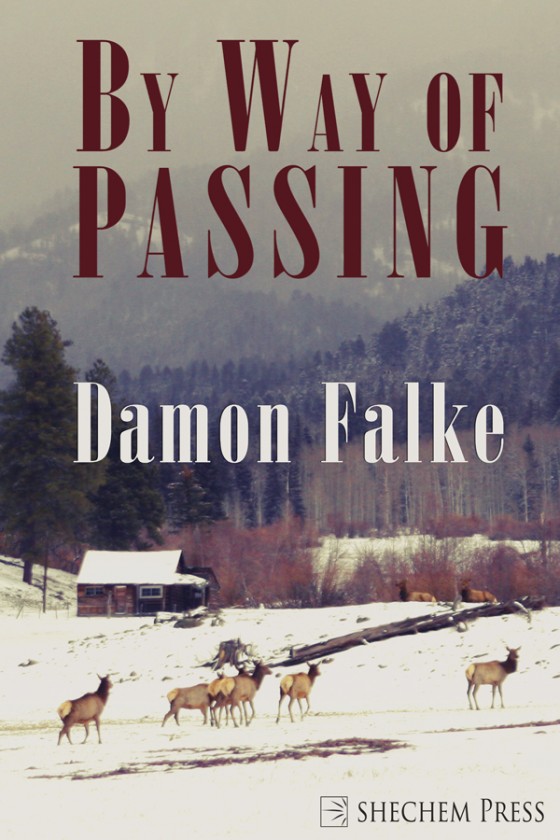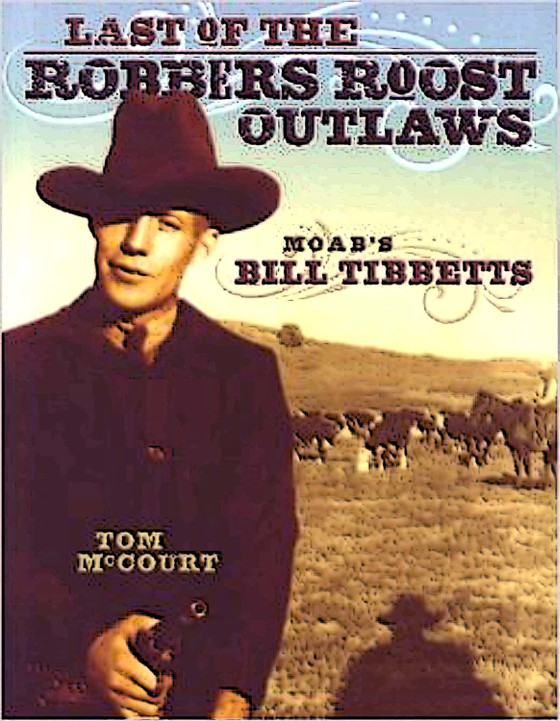Hi Natalie Randall,
I’m writing a Zephyr article about the “Make it Monumental” promotion that San Juan County plans to implement and I’d like to ask you some relevant questions. First, my article in September was a cautionary tale about the way Industrial Tourism established itself in Moab twenty years ago, and was never intended as a personal attack on you. In fact, I was unaware of ROAM industry until just a couple days before we posted the issue, and I simply raised questions and concerns that were never discussed or mentioned in the county weekly newspaper. Obviously, the commissioners are pleased with your work and support your efforts. Days after The Zephyr story posted, the “Monumental” campaign was announced in the San Juan Record.
Phil: The TMPF grant was a big one for San Juan County. TRT and TRCC are revenue to the county, but the uses are statutorily laid out. Essentially, the county can use 2.25 of the 4.25 percent collected in TRT and all of the restaurant to “mitigate the impacts of tourism” on the county. The balance must be used to promote tourism. Because we lump the two together, and because they are based on two different sales criterion, an exact percentage of what the county can use for mitigating expenses is a moving target. Here is the data from the latest financial statement. TRT and restaurant tax are lumped together, and this is just for the eight months ended 8-31.

Here is the same view for the year ended 12-31-17

One thing that you can see pretty clearly is that our property taxes are dropping, and our TRT is increasing. I think our restaurant tax was around $100K which would have put the TRT at around $913K. The county would have been entitled to use $583k for tourism related expenses other than promotion. (calculated as follows: $913K x (2.25/4.25) + $100k). This would leave $430K earmarked for promotion.
In the past the county has spent as much as 100% of the money on promotion related activities leaving the county holding the bag for any tourism related mitigating costs. Educating the previous economic development director earned me a sea of troubles including allegations of mismanagement, sexual harassment, racism, tax fraud and any other slander the director could conjure. Fortunately I can still add and subtract despite the defamation.
Even with our categorization, it is not completely cut and dried as to what is promotion vs visitor services, and both are considered to be out of the “promotion” bucket of TRT and TRCC. In 2017 that expense was $698K. You could, and I would, argue that the county should have kept that closer to the $430K mandated amount, but since the law does not punish us for using too little of that money for mitigating costs. Prior to my taking office, the narrative was that this money belonged to the economic development director and that any use outside of promotion was, in his words, illegal.
At any rate, the infusion of $200k of state money for promotion, frees up $200k that the county has been spending on promotion that can now be used for mitigating costs. That is a big deal, and indirectly puts $200k right back into our general fund. So yes, the commissioners were please with Natalie’s efforts to tap those state resources rather than only using local general funds to run her department.
I also understand that some of these questions relate to decisions made before you became the economic development director. Again, my questions are not personal. But I believe San Juan County citizens have the right to know that decisions are being made and goals are being established by local government that could affect many more of the county’s citizens than those with a vested financial interest in a booming recreation economy.
Phil: While the recreation economy may be booming, it is not booming in San Juan County, and the environmentalists, using the BLM as their weapon of choice, continue to destroy our lives and businesses. The counties lost revenue is one thing, but the drop in taxes is due to a drop in value of mineral producing property. Along with that drop in value is loss of real jobs for real people. It is not right, and I would go to jail in order to defend our right to work and use our land, but in the end, Tourism money has provided a way for some people to remain in the county that would otherwise have had to relocate. Ideal it is not, but reality is rarely ideal.
First, I recently examined the “assessment” that you provided to Jami Bayles. When was the “Roger Brooks International” firm hired by the county, how much time did they spend in the county, when was their work completed, and how much were they paid?
Phil: I don’t know.
DICIO Group, a public relations firm, is reportedly being paid $5,000 a month by the county. Can you confirm that and what is their role as it relates to tourism?
Phil: We hired DICIO group after a brief stint with a couple of other PR firms. During the Bears Ears gang bang from your old friends at SUWA, we had more publicity than we could have ever paid for, and it was mostly negative. I lobbied for over a year to get the county to hire a PR firm to help with the messaging. We anticipated that we would terminate our agreement with DICIO after the reduction, but as attacks have only increased and as the narrative continues to grow both positive and negative, we feel like our small effort to direct the immense amount of attention is providing a tremendous return on our investment. DICIO is not paid from TRT money, they are a line item of the commissioners’ budget.
As I understand it, a firm called “Relic Agency” is doing the ad campaign. How much are they being paid and when will their campaign be ready for public dissemination? And how long will the campaign last? If the county believes it has been a success, is there a plan to increase promotion even more?
Phil: This is who the Utah Department of Tourism uses for a lot of their media work. Since our TMPF (Tourism Marketing Performance Fund) grant is a partnership effort with the State, and since they do this routinely and we do it not at all, we are happy to have them direct much of the technical side of this promotional grant.
In your June 2018 working meeting with the commissioners, you said, “…we’ve done small matches in the past of like $10,000 or less. This year we’re kind of pulling a big one. We’re doing a $400,000 campaign project. We already have $200,000 that were typically allocated in our budget for marketing. This type of marketing specifically so we want to capitalize on that.”
That’s a 2000% increase from previous promotions (4000% counting matching funds), based on your comments. That is a dramatic increase. Is there any limit that the county might impose upon itself to keep tourist promotion from spiraling out of control?
Phil: I think I have addressed this. This is not necessarily an increase in marketing, since the county has spent a lot of money on marketing in the past. If you want to call it a 2000% increase in revenue that Natalie was able to secure, that would be accurate. I am sure we will see an increase in marketing expenses this year, but rather than just spending $200k that was budgeted, we have a match from the state. As for imposing a limit, the budget is the limit, and the question you pose about spiraling out of control is more of an indictment than a question. The commissioners’ primary function is budgetary, and there is nothing spiraling out of control other than our legal defense costs. What you have with funding tourism is a powerful lobby and a well-funded engine. If the county works harder to keep TRT spending closer to the prescribed formula, and it is successful. Spending on promotion will increase year over year as mandated by the code. Sales tax revenue, property tax revenue, and the portion of TRT used for mitigation will also increase. If that is the definition of spiraling then it will spiral, but within the strict confines of the code. Typically we think of spiraling downward, which could also happen if tourism shrinks. Then promotion would shrink, and tourism would shrink even further.
You also stated that, “across the county there’s a lot of support for the campaign and there’s excitement for it.”
Phil: That is no doubt true. Some people are thrilled to have a national monument. Some are thrilled to have a good promotion of the area. Some are thrilled to have more customers in their restaurant. You should not conflate the monument with the promotion or with the grant. They are three separate things that stand alone.
Can you tell me which tourist businesses specifically signed on and can you tell me what other businesses and individuals, not tied to the tourist industry also support the plan?
Phil: I don’t know specifics. But I am not tied to the tourist industry and I applaud Natalie for taking the initiative to bring in State grant money. (Yes I have clients in tourism, and I have a group of local developers trying to put together a Fairfield Marriott project, so I might be more tied to tourism in the future.)
San Juan County has a population of over 16,000. What percentage of the county’s residents do you think was aware of the “Make it Monumental” campaign as it was being developed, before it was finalized and on course to be initiated? In other words, how many of the county’s citizens were aware enough to object or offer criticisms before it was too late to bother?
Phil: What do you mean by too late? You know, our economic director applied for a grant and it was awarded. A couple of very rough draft conceptual videos have been produced and are under editorial review. None of them mention the monument or use the tag line make it monumental. The tag line has never been the focus of the effort except by those who are hostile toward San Juan County. The trib and the San Juan Record saw an opportunity to disparage Natalie and the County by making their own narrative about this campaign. It pains me to see you and Jami jump on board with them. This is another gaslighting accusation put in the form of a question.
Further, you talked about building new tourist infrastructure and told the commissioners that you would first, “reach out to the residents…is there anyone that wants to take on that need? And if there isn’t, then our office (is) going out and recruiting, and bringing in outside business to do that. We’d like to keep it local first if possible, and then grow from there.”
Phil: Yes, if we plan to engage people as they pass through our communities, we need more restaurants and hotels. A major survey was performed a few years ago and residents said they favor growth if it can be accomplished by locals. It is hard to pull ourselves up by our own bootstraps so to speak but that is the sentiment that Natalie was referring to.
So if there isn’t the interest locally, or more likely there is a lack of expertise and the financial resources to build a bigger tourist infrastructure, you plan to go outside the county to recruit new businesses to exploit what you clearly regard as a lucrative opportunity. How does that benefit the local economy, other than an increase in the county’s tax base? (which is exactly what Moab and Grand County said and did 25 years ago.)
Phil: You are clearly suffering from PTMD – post traumatic Moab disorder and think that because Moab promoted mountain biking or restaurants that any community that wants a couple of restaurants and bike trails is going to hurt you. Cedar City also promotes their ATV trails, their Biking, their college, and their hotels.
Logan does it. Provo does it. Even Price and Brigham City does it. (can you name that tune?)
Moab’s flaw is that they hate Mormons. As a result, everything they do is an affront to Utah. Bluff has the same disease. Park City to a certain extent. But Blanding does not hate Mormons for the most part. Monticello has aligned themselves with an anti-Mormon element that I predict will cause problems for all of us.
Your comments also remind me of remarks made to the San Juan County Commission four years ago by Ashley Korenblat, the executive director of the Outdoor Business Network (now “Public Lands Solutions.”). She said, “You’ve got to advertise to get people to come and to encourage people to start the businesses, but unless the business is there, unless the restaurants and grocery stores and hotels are there, you don’t really see the revenue. It’s hard to see the benefit of the advertising. So it’s sort of this thing that has to evolve… Like, it’s just pure entrepreneurship.” (emphasis added)
Phil: That statement is 100% pure fact. There is nothing about that statement, other than the person saying it, that is even remotely inaccurate. I read Saul Alinsky’s book rules for radicals, twice. It is infuriating and an afront to decent people, even dedicated to Lucifer, that first great organizer, but it is also nearly 100% true. Why would you advertise fine dining in a town with no restaurants, and why would you build restaurants and then not advertise them. Remove the PTMD and it is pure entrepreneurship, Cal Black style.
Do you think that sums up the county’s views as well? Bill Haven, a passionate promoter of tourism has also aligned himself with Korenblat, writing in the SJ Record that he “gives (her) a lot of credit for trying to organize businesses and getting involved in the land use debate.”
Phil: Ashley’s business could be a case study for marketing students on how to build a profitable business using other people’s land and money. Bill and I have discussed this and we both agree, but recognizing the genius is not saying that her business model is virtuous. Its like saying someone is a consummate politician, or a hugely successful writer.
Does your office work with PLS in any way and do you and the county commission share her approach to tourism and recreation?
Phil: I don’t think the county has any association with Ashley. Our paths cross occasionally. I have burned my bridge with Ashley by exposing her participation with Juan Palma and Brad Peterson in the “Boycott Utah unless they support bears ears campaign. PLS will continue to win, not on its own merits, but because liberals drive the BLM bus and Ashley is from the right tribe.
I’d like to ask for your comments regarding some of Mr Haven’s other remarks at the September 4, 2018 commission meeting. He told the commission that in 2016 the county had “put in for kind of the same marketing grant in 2016 and we did receive acceptance of that grant…. but we never used that grant because of the situation at that time with the Bears Ears National Monument. We re-met as a group and said maybe it’s not appropriate right now, with what the county’s doing and the citizens of the county, with regards to the monument.”
Phil: I know that the Blanding Area travel council and the city of Monticello teamed up to do a billboard campaign promoting the area to the Denver and Phoenix market. I think they backed off because it was simply drawing too much negative attention. Plus we were being inundated with visitors that we had not anticipated when the promotion was first proposed. And it had nothing to do with promoting a monument.
The citizens who have contacted me recently about this matter cite the fact that the “Monumental” promotion, in name but also in its size and scope, smacks of hypocrisy. What’s different now?
Phil: Those people fail to realize that tourism is a major economic engine for the county and has been for the past 100 years and will be for the foreseeable future. I dislike the tag line very much. Natalie was not involved in all the carnage surrounding the PLI and the monument designation. As an economic development director we do not pay her to be a political pundit but to see what works economically. Apparently the “make it monumental” tag line resonated with visitors to whom it was targeted. It did not resonate with me, and I have gently encouraged the use of a different tag line. This entire campaign is at its alpha not its omega, and it makes absolutely no sense to drop a hammer on someone who is tasked with actually doing something, and who is asking for some constructive feedback. Since this ultimately will come down to a commission decision, and since we like Natalie a lot, we have offered our feedback. She also has an advisory board that has offered their feedback, and at the point that it finally made it to a public meeting, the purpose of which is to engage the citizens, we are now able to get additional citizen feedback.
Also, Mr Haven said at the meeting, ” I never heard one person say ‘my goal is to turn into Moab’.”
The fact is, NOBODY in Moab, twenty years ago, thought it would become what it is now. I lived there for 32 years and was one of the few to suggest that an Industrial Tourism economy could spin out of control.
http://www.canyoncountryzephyr.com/2013/12/02/new-west-blues-by-jim-stiles/
I am sure that no one in their right mind, not even Mr Haven, wants to see Blanding become the “next Moab.” But could you tell me what your office and county government thinks it can do to assure that San Juan County promotes a tourist economy that is predominantly beneficial to the people who live there now? What specific steps can be taken to assure that goal? Does the county have a plan? How does it assure that the jobs created are living wage jobs? (And also, what kind of efforts is your office making to bring non-tourism jobs to the county? Can you be specific?)
Phil: Unlike the BLM San Juan County does not have totalitarian delusions. We tend to follow the philosophy of Joseph Smith, “let them govern themselves.” It is each persons responsibility to support themselves and not the counties job to assure anyone a “living wage job.” If someone wants to build a resort style hotel, sell alcohol, rent jeeps, and give river tours, God bless ‘em. If someone else wants to try to create an outdoor school to promote appreciation for Gaya and her many gifts, God bless them too as long as they do it with their own money and not with government subsidies. Moab citizens took a passive stance when they should have been proactive, at least if they wanted to control the local economy.
I must again identify your PTMD at work here.
And how does the county plan to deal with impacts to the community and the area caused by sudden increases in tourism? Is there a plan for that as well?
Phil: Sudden increase in tourism? Obama took care of that for us. We have had a huge increase in traffic and we were unprepared for it.
Regarding tourist-related jobs, Haven made an extraordinary comment to the commissioners on September 4 when he stated, “There’s a lot of people that work in the tourism business and cleaning rooms was never meant to be a career, it’s a way to make some extra money, and most people that do it say ‘great! I made some extra money!”
Haven makes it sound like people who work in the tourist economy cleaning toilets do it as a sideline. Very few Moabites who work in marginal tourist-related jobs (sometimes they work three jobs just to get by), think of it as a hobby or a quick way to earn some extra fun money.
I can tell you that there are hundreds of people in Moab and untold thousands in other tourist communities in the West who would take issue with Haven’s remarks. In fact, I suspect they’d be furious. People in Moab are working minimum wage jobs and trying to survive in a community where housing prices have spiraled out of sight. They may not have “meant” for it to become a career, but hard economic realities have often made it so.
Does your office look ahead to deal with these kinds of issues?
Phil: Jim, seriously.. your line of questioning is so accusatory. I have not seen this side of you, but it bugs me. Why should Natalie opine on Bill Haven’s comments? Why should she, or in this case I, have to respond to a set of questions that are little more than a tirade against Moab. Do you think that we are not sentient beings? Do you think that having lived in Moab first as a radical Ed Abbey environmentalist and then as the pariah of the environmentalists, gives you a moral high ground that warrants this sort of gotcha questioning. Of course the San Juan County economic development department looks ahead. They are a branch of the county government and as such, have all the restraints and all the accountability that is required of county governments. It is a wonder any department can function at all in this over-sensitive, irrational environment, but ours do a decent job. We have a hard time finding good employees and an even harder time firing bad ones. Natalie is one of the best. You really should seek to understand before casting dispersions. You have missed the mark and led a bunch of people down a really unfortunate path on this issue. You have given ammunition to our enemies, and distracted people from their lives and responsibilities. I don’t mean this as anything but a candid exchange between friends at this point, but on the record as you stated.
And finally, Haven states that “this is the first marketing plan the county has come up with (in at least in 11 years).” Obviously it’s a massive spending increase from the previous decade.
You and other community leaders have seen the effect of tourism on Moab and Grand County. So why now? Nothing has changed in San Juan County except the creation of Bears Ears National Monument. While you and the commission may believe that a slight name change will solve the public relations issue, the real concern for many is the amount of money being spent and the aggressive way the county is suddenly going after tourist dollars. Or was the county’s leadership opposed to the original monument proclamation only because of its concerns about federal government overreach?
Phil: “Nothing has changed except the creation of Bears Ears National Monument”?? That’s like saying nothing has changed except Donald Trump was elected president, or Nothing has changed except for the passage of FLMPMA, or nothing has changed except traffic increased by 180% almost overnight. And asking if the county’s leadership was opposed to the original monument proclamation only because of its concerns about federal government overreach, is like saying that rape is essentially the same as consensual sex. Process matters much more than the final product.
This is another loaded question directed inconsiderately at the wrong person.
After all, this promotional campaign comes on the heels of a very strong and united resistance by many San Juan County citizens who not only opposed the original proclamation but who also objected to and resented the massive marketing of the area by mainstream environmentalists and the powerful outdoor industry. A monolithic tourist/recreation economy is not a future that many San Juan citizens want. In fact, with good reason, many dread the notion.
Consequently, does your office and local government understand why so many citizens — in and out of the county — are looking at this tourist promotion as a contradiction?
Phil: Yes
And I think it’s also fair to ask why a county government that prides itself on its conservative views feels it’s appropriate to publicly fund private industry. How is this compatible with the standard conservative perspective that government should stay out of private enterprise?
Phil: https://le.utah.gov/xcode/Title59/Chapter12/59-12-P3.html
San Juan County did not invent TRT yet we are obligated to collect it. And you want the county government to both stay out of private enterprise and to ensure a living wage job. Another loaded question filled with animus.
Haven even stated at the September 4 meeting that, “Some of the businesses have done some marketing on their own and has (sic) success with it.” That makes perfect sense. I don’t expect San Juan County to help promote The Zephyr. Why should any business in San Juan County assume it should? As I understand it, the Transient Room Tax is not mandatory. (correct me if I’m wrong). The counties choose to impose the tax and at what level. Most conservatives oppose the heavy burden of taxation on citizens by any government entity. The TRT does little to help anyone in the community except those with a vested financial self-interest in tourism.
Phil: I don’t think any business in San Juan County assumes that San Juan County “should” promote their business, however, as I have said, this TRT machine is a formidable one. If you would like to lobby to have it repealed or to get the county to opt out of the local element of TRT, knock yourself out. But to try to affect an industry and legislative institution like TRT by demanding that Natalie answer for it or for the county is yet again an affront to common courtesy.
Those are my questions for now. I may have more later. Both Mr. Haven and your husband chastised me for not asking you questions directly when I wrote my first short article on bike trails…I hope this series of questions provides your office a greater opportunity for transparency with citizens of San Juan County. I’d appreciate a reply to these questions at your earliest convenience, and please note that I regard all correspondence as on the record.
Jim, Natalie’s office is completely transparent. What you call providing an opportunity for greater transparency is nothing but an assault. I know your animus is not directed at Natalie and I am glad she directed this to me because you seem to have a healthy disdain for pretty much everything above, below, and surrounding the county, tourism, TRT, Bill Haven, mountain bikes, and who knows what else.
I am glad that this correspondence is “on the record” because I think a lot of those who see you as a voice of reason, myself included, may start to recognize a less friendly motive than the one you portray. Scott Groene would be pleased.
Regards,
Phil
In Response…
I can only reply by saying that for almost 30 years, I have consistently expressed the belief that an “Industrial Tourism” economy can have a devastating effect on rural communities and on the very resource environmentalists claim they are trying to protect. I first expressed those concerns in 1991 in an essay called, “New West Blues.” When I wrote that article, Moab was still a quiet “economically depressed” town. It was the first of many “cautionary tales” that I have written since then. I am not driven to write these articles by partisanship or ideology– I can’t. Any journalist who abandons objectivity to please his friends abandons his integrity as well.
And so, this has never been about “switching sides;” I tried to follow the issues, the information, and the facts.
Consequently, the mainstream environmental community, especially in Utah, has indeed, as Lyman states, labeled me “a pariah,” or worse. My opposition to a runaway tourist economy led my old environmentalist friends to portray me in public as a mentally unstable man with mysterious, deeply rooted “anger” issues.
As recently as last Spring, when a Salt Lake City journalist mentioned The Zephyr to a SUWA staff attorney, I was dismissed out of hand as an irrelevant “crank.” (I object to ‘irrelevant!’)
And for trying to take what I regard as a principled stand on Industrial Tourism, I lost most of my advertising support in ‘New Moab.’ The print version of The Zephyr ended in 2009 mainly for that very reason.
My well-documented concerns about Industrial Tourism as they relate to the Bears Ears controversy resulted in allegations that I’ve become a shill for the oil industry, white supremacists, Governor Herbert, the “alt-right,” and yes, even Phil Lyman.
So when Commissioner Lyman writes that, “Scott Groene will be pleased,” he may be right, but for a very different reason.
My old friend “Groan,” and the Southern Utah Wilderness Alliance, the Grand Canyon Trust, the Friends of Cedar Mesa, Patagonia and North Face, and their associates in the outdoor industry, and the urban environmental community across the country— all of them believe that the best way to eliminate the rural extractive American West is to pursue the “Industrial Strength Recreation” economy that the Trust’s Bill Hedden once said could doom it.
Whether this consortium finds support for that idea in the Liberal preferences of Moab, or the Conservative pursuits of San Juan County, it doesn’t matter. To them, as long as the outcome is the same, it’s a victory.
So yes, “Scott Groene will be pleased.”
Ultimately it may well be that San Juan County embraces full-fledged Industrial Tourism as the solution to its economic woes…But the citizens must be the ones leading themselves to the future. The only way they can make those choices is to be privy to all the facts. They can’t make honest and intelligent decisions without them. That’s all this publication ever attempts to do. We ask questions and look for some answers…JS
EDITOR’S NOTE: After the publication of the “Monumental” article and this blog link, we heard, via email, from Commissioner Lyman…
LYMAN
Jim,
I read your piece, and the complete email exchange between us. I have not received the email follow up that is included in your article. Did you actually send that to me?
Phil
STILES:
Phil,
I don’t understand your question. We posted your ‘on the record’ comments. In it you wrote:
“I am glad that this correspondence is ‘on the record’ because I think a lot of those who see you as a voice of reason, myself included, may start to recognize a less friendly motive than the one you portray.”
You wanted the public to read your comments. I responded publicly.
LYMAN:
I am glad to have the email exchange included. My question was that you included in your piece what you claim was a response to my email but which I have no record of you ever actually sending to me. My question is quite simple. Don’t try to read more into it than I have asked.
The part from your article that you claim to have sent me in response follows. I simply asked if you actually sent this to me or if you were just trying to give that impression to your readers?
FOR ALL ZEPHYR READERS, INCLUDING PHIL LYMAN….
In case any of our readers were similarly confused, the italicized response, which is also in the larger Monumental article, was our public response to his ‘on the record’ comments. It was not sent privately to Mr. Lyman…JS

